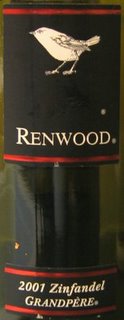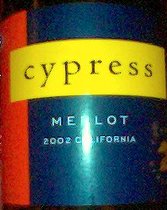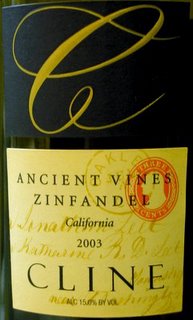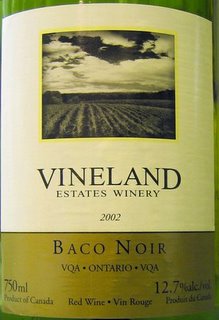Here's Ed's latest science column, which this week happens to be related to wine. You can find more of Ed's columns, most of which don't have to do with wine (but do have to do with science) here.
***********
Probably thanks to books and movies, many people think that the older the wine, the better.
That's not necessarily true. As one rule of thumb notes, more good wine is drunk too late than too early. Wines kept too long in the bottle actually deteriorate, and some wines simply never benefit from being kept in the bottle at all. However, for certain wines—generally complex (and typically more expensive) reds, bottle aging softens the harsh tannins present in the wine when it's young, and allows the various components in the wine to slowly change and blend, releasing more (and different) flavors and aromas.
The biggest problem with bottle aging, from a wine connoisseur's point of view, is that it takes so darn long.
An inventor in Japan claims he has an answer to that, but wine experts are taking his claims with a grain of salt (or possibly, being wine experts, a nice bit of Brie).
The Associated Press reported this week that Hiroshi Tanaka says he can transform a bottle of freshly fermented red wine into a mellow "aged" wine in seconds, by passing an electric current through it.
His machine is described as about the size "of a stereo" (although, considering the wide range in stereo sizes, that's a less-than-helpful comparison). Wine passes through one of the device's two chambers; tap water passes through the other. A special membrane, which Hiroshi Tanaka's company, Innovative Design and Technology Inc., has patented, separates the two. Platinum electrodes drive negative ions from the wine into the water through the membrane.
Tanaka says his machine works by breaking up water molecule clusters, allowing the alcohol in the wine to more thoroughly blend with the water, although he notes that the exact mechanism of water molecule clusters is a matter of scientific debate. (Water molecules do apparently form weakly bonded clusters with other water molecules—and with alcohol—but "water molecule clusters" also feature prominently in a lot of pseudoscientific claptrap, which may not bode well for Tanaka's success.)
However it works, tasters agree that wines passed through the machine taste different. Back in October, the Times of London also reported on Tanaka's machine. (I don't know why it took until January for the AP to do so.) The Times noted that sommeliers at one winery described the effects as "interesting." The AP story says that "to the untrained palate, a bottle of Beaujolais Nouveau...became a more full-bodied, complex wine. Similar treatment to a Sauvignon Blanc 2004 resulted in a drier aftertaste."
But is the effect the same as aging?
Probably not. Bottle aging is complex and not fully understood. (For example, debate continues on how much of a role oxygen plays in bottle aging, which is important because of the current drive in some quarters of the oenophile world to replace natural corks with synthetic closures. Natural corks allow a small amount of oxygen through; will wines age the same if that oxygen doesn't reach them? Right now the evidence appears to indicate that oxygen doesn't play a role in the aging of wines in the bottle, but not everyone is convinced.)
That doesn't mean Tanaka's device may not have some uses. The great Bordeaux winemakers are unlikely to be installing any wine-electrolysis machines any time soon, but there might be a market for home users (especially home winemakers), especially since the transformation apparently takes only 15 seconds. Wineries in California (Robert Mondavi, for one), Chile, South America and elsewhere are at least keeping an eye on the machine, according to The Times.
Tanaka thinks his electrolysis machine might be able to improve other forms of alcoholic beverage, from sake to vodka to...well, to shochu (distilled sweet potato spirits--a small shochu maker in southern Japan is so far the only confirmed investor in the device).
Color me skeptical. Still, even if nobody in her right mind would let it anywhere near her most expensive wines, a device that improves the taste of mediocre wine could certainly prove useful the next time a guest shows up with a bottle of "I-Can't-Believe-It's-Not Burgundy" or "Fill-in-the Blanc."
You wouldn't bother aging them. But briefly electrocuting them at least couldn't hurt.
The wines, that is, not the guest.
Tuesday, January 24, 2006
Saturday, January 21, 2006
After cheese, is all wine the same?
That's what a study reported on in New Scientist claims: apparently cheese masks the subtle flavours that distinguish good wine from plonk, to the point that even experts can't tell the difference between the two.
In other words, if you're going to have a wine and cheese party, don't serve the good stuff.
We just wish someone had told us that before we poured out those two bottles of Chateau Latour as Margaret Anne's mom's birthday party recently (tasting notes to come)...
In other words, if you're going to have a wine and cheese party, don't serve the good stuff.
We just wish someone had told us that before we poured out those two bottles of Chateau Latour as Margaret Anne's mom's birthday party recently (tasting notes to come)...
Friday, January 20, 2006
Wine drinkers have healthier diets than beer drinkers
People who buy wine have healthier diets than people who buy beer, according to a new study.
But what about people who buy both? (Hic.)
But what about people who buy both? (Hic.)
Tuesday, January 17, 2006
Pegasus Bay Sauvignon Semillon 2003
 Ed's brother Dwight buys New Zealand Sauvignon Blanc by the rule that all the best ones have "Bay" in their name. This Pegasus Bay isn't a pure Sauvignon Blanc, but a Sauvignon Semillon blend, but the rule still seems to hold true. "A diesel nose (but in a good way!) and grapefruit flavour," says our written note from November 25. "Very grapefruit." That's all we wrote, but we know we enjoyed it.
Ed's brother Dwight buys New Zealand Sauvignon Blanc by the rule that all the best ones have "Bay" in their name. This Pegasus Bay isn't a pure Sauvignon Blanc, but a Sauvignon Semillon blend, but the rule still seems to hold true. "A diesel nose (but in a good way!) and grapefruit flavour," says our written note from November 25. "Very grapefruit." That's all we wrote, but we know we enjoyed it.Good though this is, though, we like pure New Zealand Sauvignon Blancs better.

Renwood Zinfandel 2001
 We like Zins in general, and we liked this Renwood Zinfandel in particular. ("Delicious!" says our written note from November 18.) It didn't have a huge nose, but it had a wonderful earthy, spicy flavour, and Margaret Anne detected a bit of cherry. Although still fairly young it was quite brown in the glass--garnet, we guess you'd call it. Recommended, and we'd certainly buy it again.
We like Zins in general, and we liked this Renwood Zinfandel in particular. ("Delicious!" says our written note from November 18.) It didn't have a huge nose, but it had a wonderful earthy, spicy flavour, and Margaret Anne detected a bit of cherry. Although still fairly young it was quite brown in the glass--garnet, we guess you'd call it. Recommended, and we'd certainly buy it again. 
Les Jardins de Bouscassé Le Jardin Philosophique 2003
 This Les Jardins de Bouscassé Le Jardin Philosophique 2003 with the artsy label is a Pacherenc du Vic Bilh, a fairly rare white wine made from the Petit and Gros Manseng varietals. It can be sweet or dry; this one was dry--in fact, very, very dry. It had a lovely fresh citrus bouquet, and lots of flavour (the label suggests peach, which we're willing to go along with), with a lingering, though somewhat bitter, aftertaste. Very interesting, and we'd certainly buy it again.
This Les Jardins de Bouscassé Le Jardin Philosophique 2003 with the artsy label is a Pacherenc du Vic Bilh, a fairly rare white wine made from the Petit and Gros Manseng varietals. It can be sweet or dry; this one was dry--in fact, very, very dry. It had a lovely fresh citrus bouquet, and lots of flavour (the label suggests peach, which we're willing to go along with), with a lingering, though somewhat bitter, aftertaste. Very interesting, and we'd certainly buy it again. 
Vineland Estates Dry Riesling 2004
 We received two bottles of this Vineland Estates Dry Riesling through their wine club, and we liked it so much (being German wine fans and hence Riesling wine fans that we are) that both bottles are already gone. It's fresh and tart, a bit green appley, a bit apricotty (hey, that's what we wrote down!), with a lovely acidic bite. Yum!
We received two bottles of this Vineland Estates Dry Riesling through their wine club, and we liked it so much (being German wine fans and hence Riesling wine fans that we are) that both bottles are already gone. It's fresh and tart, a bit green appley, a bit apricotty (hey, that's what we wrote down!), with a lovely acidic bite. Yum!(Our apologies for the blurry label photo. By the time we noticed we hadn't gotten a good shot, the bottle had gone to recycling.)

J. Lohr Cypress Merlot 2002
 We had this J. Lohr Cypress Merlot at the new Crushed Grape restaurant here in Regina, whose claim to fame (aside from a very nice ambiance and pretty good food) is that it offers a very wide selection of wines by the glass. (Although, as you can see, we bought a bottle.) It set us back about $36 at the restaurant.
We had this J. Lohr Cypress Merlot at the new Crushed Grape restaurant here in Regina, whose claim to fame (aside from a very nice ambiance and pretty good food) is that it offers a very wide selection of wines by the glass. (Although, as you can see, we bought a bottle.) It set us back about $36 at the restaurant.We didn't take a lot of tasting notes, since it was a social occasion, so all we'll say is, "Very purple. Very fruity. Very nice."

Briar Ridge Merlot 2003
 This Briar Ridge Merlot has a more vegetative than fruity character, both on the nose and on the palate. It's quite dry. We found it good, but not outstanding, so if we were shopping for a Merlot, would probably look elsewhere first.
This Briar Ridge Merlot has a more vegetative than fruity character, both on the nose and on the palate. It's quite dry. We found it good, but not outstanding, so if we were shopping for a Merlot, would probably look elsewhere first. 
Monday, January 16, 2006
Schloss Gobelsburg Grüner Veltliner 2003
 We tasted a number of Grüner Veltliners at the International Wine and Food Festival at the Banff Springs Hotel in October (about which much, much more at some unspecified future date) because one of the sessions was on Austrian wine, and Grüner Veltliner is the archtypical varietal of Austria. We enjoyed them very much in Banff, but this one from Schloss Gobelsburg was, for some reason, a bit of a disappointment: it seemed thin and uninteresting, especially in comparison to the Martinshof Morio-Muskat Kabinett blogged about two posts ago.
We tasted a number of Grüner Veltliners at the International Wine and Food Festival at the Banff Springs Hotel in October (about which much, much more at some unspecified future date) because one of the sessions was on Austrian wine, and Grüner Veltliner is the archtypical varietal of Austria. We enjoyed them very much in Banff, but this one from Schloss Gobelsburg was, for some reason, a bit of a disappointment: it seemed thin and uninteresting, especially in comparison to the Martinshof Morio-Muskat Kabinett blogged about two posts ago.Perhaps we only like higher-end Grüner Veltliners...obviously, a wider sampling is needed!

Thursday, January 12, 2006
Wine drinkers 'follow their own path in life,' a survey says
According to a new survey, wine drinkers are "confident, savvy adventure seekers." Well, of course we are.
Wine drinkers are also more likely than non wine-drinkers to:
Be open to new experiences
Follow their own path in life
Be confident and information-savvy consumers
Desire intangibles, experiences and emotions
Have their life priorities in order
Eschew brands as badges
Wine drinkers are also (this is a personal observation, not one the study puts forward) more likely to consider themselves all of these things than non-wine drinkers, which just might skew the results, y'think?
Wine drinkers are also more likely than non wine-drinkers to:
Be open to new experiences
Follow their own path in life
Be confident and information-savvy consumers
Desire intangibles, experiences and emotions
Have their life priorities in order
Eschew brands as badges
Wine drinkers are also (this is a personal observation, not one the study puts forward) more likely to consider themselves all of these things than non-wine drinkers, which just might skew the results, y'think?
Friday, January 06, 2006
Martinshof Godramsteiner Münzberg Morio-Muskat Kabinett 2003
 This is one of the wines we ordered directly from Germany through the German Wine Society. Our notes: "Lovely nose. Peach/apricot. Fresh, fruity, nice touch of acid, a caramelly aftertaste. As it warms, more of that caramel comes through."
This is one of the wines we ordered directly from Germany through the German Wine Society. Our notes: "Lovely nose. Peach/apricot. Fresh, fruity, nice touch of acid, a caramelly aftertaste. As it warms, more of that caramel comes through."We've enjoyed every one of the Martinshof wines we purchased, and this one was no exception. Best of all, it came in a one-litre bottle!

Domaine Rimbert Coteaux du Languedoc 2003
 An absolutely beautiful gold color is the first thing we noted about Domaine Rimbert white from Languedoc upon pouring--it looks like a dessert wine, but it's actually quite dry.
An absolutely beautiful gold color is the first thing we noted about Domaine Rimbert white from Languedoc upon pouring--it looks like a dessert wine, but it's actually quite dry.And that seems to be all our notes from October say about it, except for "A smell of quince?" Which is also not something we would normally write, except we happen to have a collection of essential white wine scents (the collection is called Le Nez du Vin--I don't know if you can still get it) and quince was the closest.

Cline Ancient Vines Zinfandel 2003
 This Cline Ancient Vines Zinfandel isore vegetative than fruity on the nose--"Green pepper," says Margaret Anne. A lingering taste of...vanilla?Our notes (we tasted this on October 21) say "tart pomegranate," which seems a very unlikely thing for us to have written down--perhaps it's on the label.
This Cline Ancient Vines Zinfandel isore vegetative than fruity on the nose--"Green pepper," says Margaret Anne. A lingering taste of...vanilla?Our notes (we tasted this on October 21) say "tart pomegranate," which seems a very unlikely thing for us to have written down--perhaps it's on the label.In any event, this is a big wine (as it ought to be at 15 percent alcohol), nice and spicy just the way we like Zinfandels, and we'll definitely buy it again, given the chance. It cost us about $25.

Vineland Estates Baco Noir 2002
 We subscribe to the monthly wine service of the Niagara Peninsula's Vineland Estates, which means we get two bottles of wine a month from them, plus a recipe that the wine should complement.
We subscribe to the monthly wine service of the Niagara Peninsula's Vineland Estates, which means we get two bottles of wine a month from them, plus a recipe that the wine should complement.This Baco Noir had a nice nose--the tasting notes that came with it suggested leather and tobacco, but while Ed will grant them leather, he didn't get any tobacco. Margaret Anne felt the wine tasted "young," which may be the same thing Ed called "a certain tartness, almost sourness." The aftertaste "lingers for a little while, then goes flat," says our tasting notes. (We tasted this way back in October--we've been a bit remiss in blogging-so we have to go by what we wrote down then.)
Alice (Margaret Anne's mother, not our four-year-old daughter of the same name) said she'd only rate this 5/10. That sounds about right to Ed, but Margaret Anne may have liked it a bit more.
The Vineland Estates wine club charges $35 a month, so this bottle cost us $17.50--of course, that included delivery to Saskatchewan.

Subscribe to:
Comments (Atom)
